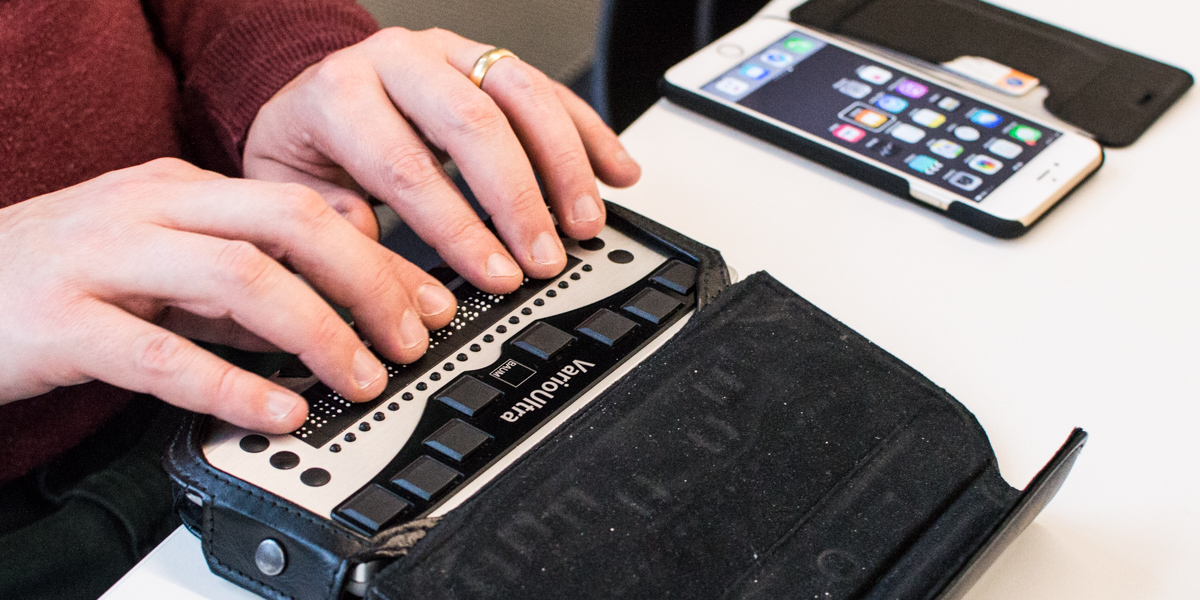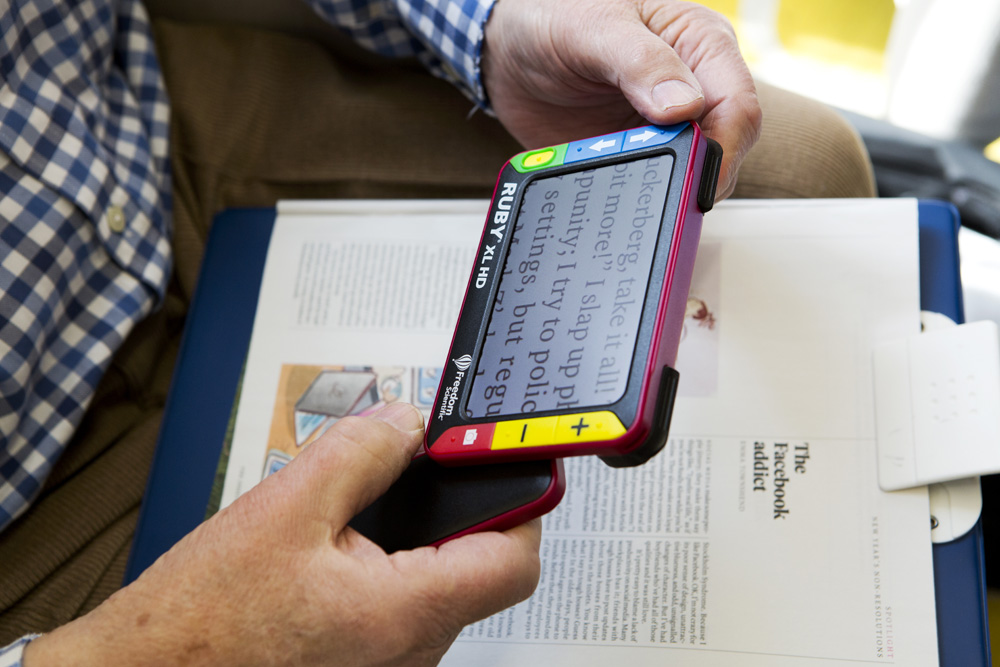Explore Smart Glasses for the Visually Impaired and Their Benefits
Explore Smart Glasses for the Visually Impaired and Their Benefits
Blog Article
Empowering Independence With Assistive Technology for the Blind
The combination of assistive innovation into the lives of people with visual impairments stands for a substantial development in advertising self-reliance and self-sufficiency. From ingenious screen readers to innovative clever canes, these tools not just improve everyday navigation and interaction yet likewise equip users to involve meaningfully in various elements of life. As we discover the myriad benefits and real-world applications of these innovations, it ends up being crucial to check out the underlying elements that contribute to their effectiveness and the potential for future developments in this crucial area.
Introduction of Assistive Innovation

The advancement of assistive innovation is based in concepts of inclusivity and empowerment. Developments in software program, hardware, and sensory improvements supply customers with choices customized to their details demands. From display viewers that transform message to speech, to tactile gadgets that convey info through touch, these devices transform the method individuals engage with their environments.
Along with practical applications, assistive modern technology cultivates higher social addition and participation in numerous fields, consisting of education and learning and employment (Mobility aids for visually impaired users). As r & d continue to develop, the possibility for assistive innovation to further boost the lives of visually damaged people continues to be appealing, paving the method for a more equitable society where everyone can prosper
Kinds of Assistive Devices
A variety of assistive devices have arised to support individuals with aesthetic disabilities, each created to satisfy specific demands and enhance everyday performance. These tools range from low-tech solutions to sophisticated advancements, offering diverse options for customers.
Low-tech tools consist of magnifiers and large-print products that assist in analysis and writing. Braille tools, such as Braille slates and stylus pens, allow tactile reading and communication. Positioning and mobility aids, like white walking canes, help customers navigate their setting securely.
On the higher end of the range, digital magnification systems and display visitors supply substantial support. Digital magnifiers permit individuals to increase the size of message and pictures on displays, while display readers convert digital material right into manufactured speech, promoting access to info on smartphones and computer systems.
Smart device applications likewise play an important role, supplying attributes like message acknowledgment and navigating aid. Wearable technology, such as wise glasses furnished with augmented truth, is emerging as an encouraging tool to improve situational awareness.
Advantages of Assistive Technology
The assimilation of assistive technology significantly enhances the lifestyle for individuals with visual problems. These modern technologies encourage users by advertising self-reliance, allowing them to browse their atmospheres more successfully and carry out everyday jobs with better simplicity. For instance, display readers and magnification software program enable people to accessibility digital information, promoting specialist and instructional possibilities that might have previously been out of reach.
Furthermore, assistive devices such as wise walking canes and general practitioners applications give real-time navigating assistance, improving wheelchair and security. This increased autonomy not just improves self-worth yet likewise motivates social engagement, enabling individuals to take part even more completely in their communities.
Assistive technology also promotes interaction, assisting individuals get in touch with others through voice acknowledgment and text-to-speech applications. This ability is essential for maintaining partnerships and accessing important info.
Additionally, the modification options available with numerous assistive technologies make certain that individuals can tailor gadgets to their specific needs, additionally enhancing usability and effectiveness. Overall, the benefits of assistive modern technology for individuals with aesthetic problems are profound, advertising a much more comprehensive society where every person can pursue their goals and goals.
Study and Success Stories
Highlighting the transformative impact of assistive technology, numerous study highlight exactly how people with aesthetic impairments have actually efficiently incorporated these devices into their every day lives. One compelling example entails an university pupil who used screen reading software to browse on-line resources and academic products properly. This innovation not only facilitated her education and learning but also boosted her confidence in participating in conversations and group projects.
An additional situation study features a professional that uses a mobile phone application designed for navigating and object recognition. By utilizing this application, he has regained freedom in both his personal and workplace, permitting him to commute separately and engage with coworkers much more properly.
Furthermore, a retiree shared her experience with braille e-readers, which allowed her to access a large selection of literature and remain linked with her community with book clubs.
These try this success stories emphasize the vital lens care role of assistive modern technology in promoting freedom, boosting lifestyle, and advertising social integration for people with aesthetic disabilities (Speech-to-text devices for low vision). By accepting these innovative tools, customers can overcome difficulties and confiscate opportunities that contribute to their expert and individual fulfillment

Future Trends in Assistive Technology
Innovation in assistive technology is poised to redefine the landscape of support for individuals with visual impairments. Arising fads stress the combination of expert system (AI) and device knowing, which enhance the functionality of tools that aid with navigating and info availability. AI-driven applications are now qualified of translating visual information in real-time, allowing users to involve with their atmosphere extra individually.
Additionally, the development of wearable innovation is advancing swiftly. Smart glasses geared up with augmented truth (AR) can provide audio summaries of surroundings, changing how customers communicate with public spaces. These devices not only advertise autonomy however also foster social addition.
Additionally, the Web of Things (IoT) is making homes smarter, enabling smooth connectivity in between assistive devices and daily appliances. This connection empowers individuals by making this article it possible for automated actions and voice-activated controls customized to individual requirements.
Final Thought
Finally, assistive technology plays a pivotal duty in equipping people with visual problems by improving their self-reliance and interaction with their environments. The diverse variety of tools and applications available not just facilitates navigation and interaction but likewise advertises social combination and possibilities for professional and individual development. As developments proceed in this area, the capacity for improving the quality of life for those with visual problems will certainly broaden, fostering greater freedom and empowerment.

Report this page